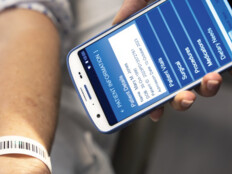How to Push Through Cultural Barriers to Enable Healthcare Mobility Programs
There’s no doubt mobility in healthcare is on the rise. In fact, by 2022, 97 percent of nurses will use smartphones, tablets and other mobile devices at the bedside, according to a new report by Zebra Technologies, “The Future of Healthcare: 2022 Hospital Vision Study.”
Messaging is especially taking off in the healthcare space, as secure messaging strategies take root in healthcare organizations to streamline clinician contact and improve patient outcomes in the long run.
“Secure messaging wasn’t even on the radar for most hospitals four years ago, and now we track 16 vendors in the space,” Jonathan Christensen, director of research analysis at KLAS Research, said in an earlier interview. “As more functionality like barcode scanning and lab results makes it into the apps, you’re going to see a consolidation into a single device.”
Despite the widespread acceptance of text messaging, resistance from doctors and IT is common when deploying a secure messaging platform.
SIGN UP: Get more news from the HealthTech newsletter in your inbox every two weeks!
Hospital Staff Fear Bulky Mobility Programs
So, what are some common cultural challenges for clinicians and hospital staff when it comes to secure text messaging?
Some worry about the intrusiveness of an app.
“In the beginning, some of the doctors were nervous about how it would affect workflow,” says David Yi, chief medical information officer at Mary Washington Healthcare.
Other users simply don’t want another device to manage.
At NewYork-Presbyterian, which uses Mobile Heartbeat, devices are shared throughout the day. This puts an additional burden on the IT and telecom departments for support.
“People take care of their own devices better,” says Leo Bodden, vice president and CTO. Even with these small issues, Yi and Bodden say using a secure communication platform is no different than using any other new technology.
“Identifying key stakeholders and their concerns, and explaining the technology to alleviate unfounded fears, is what it takes to get it done,” Yi says.
To learn more about how healthcare organizations are making secure messaging programs a success, check out our feature article, “Providers Evolve their Messaging Strategies to Boost Clinician Communication.”









